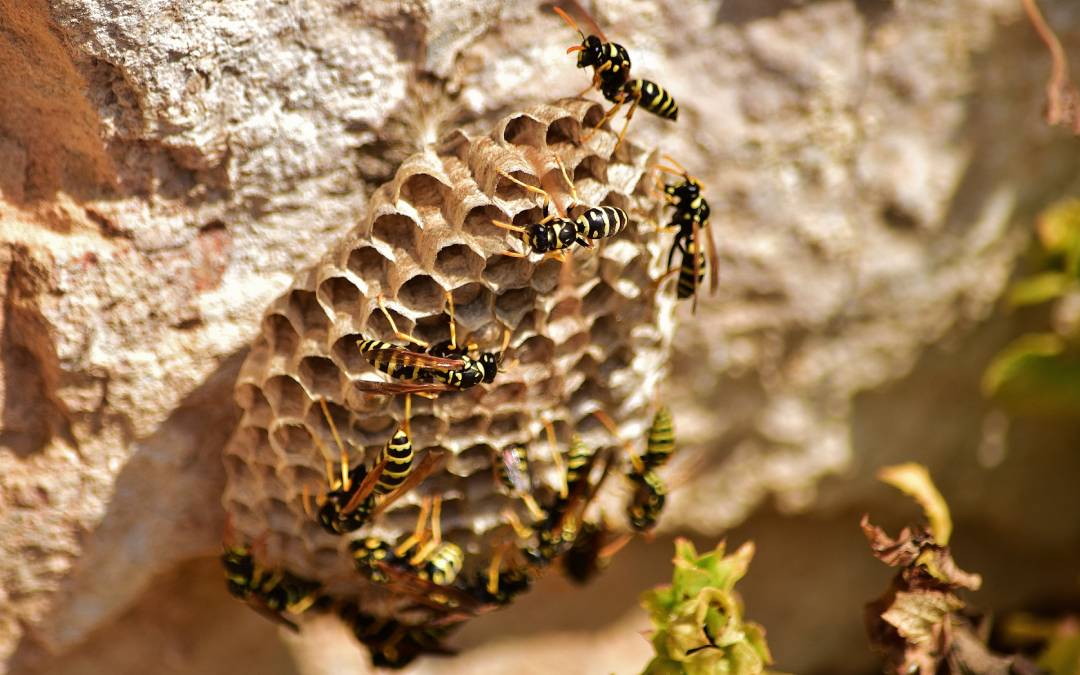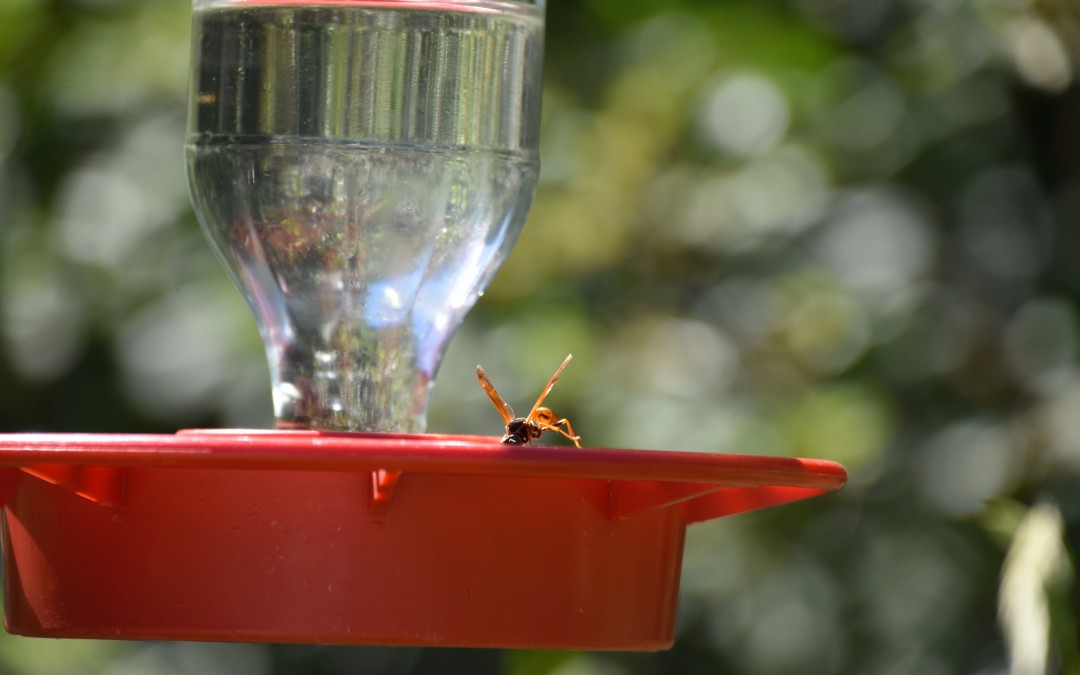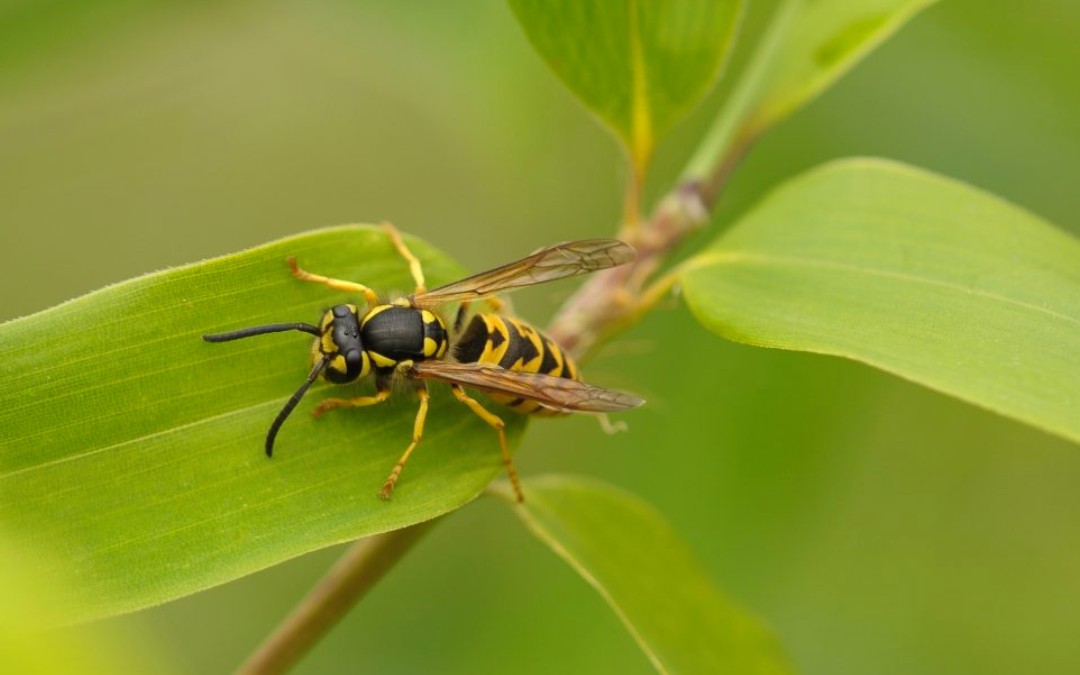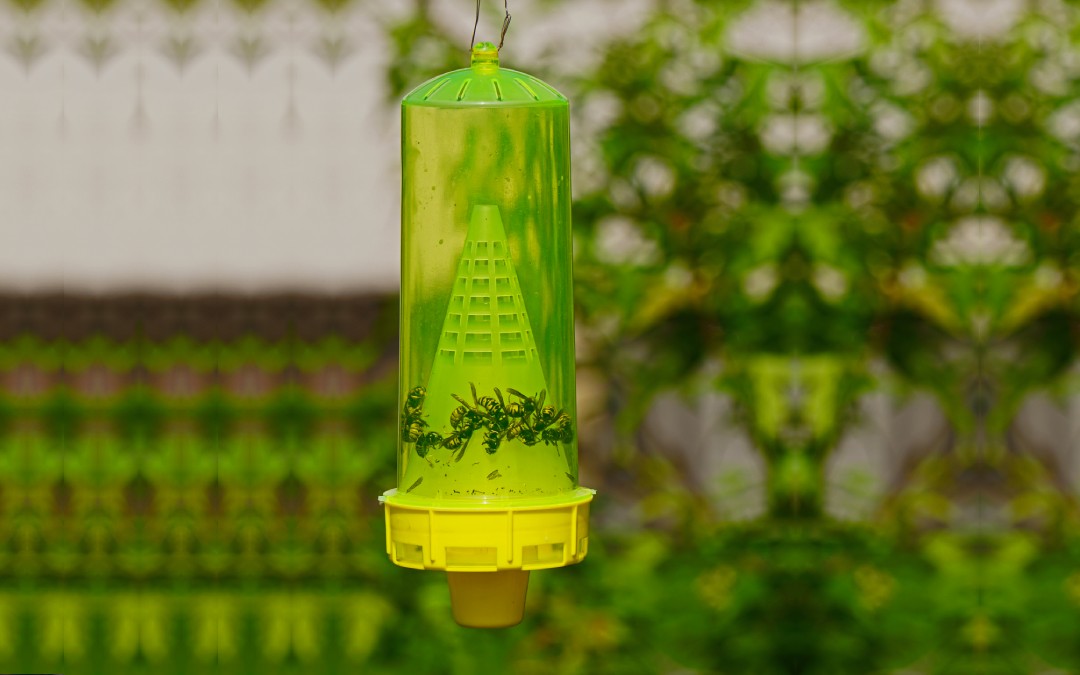Wasps can be a nuisance, especially when they build nests near your home or when they swarm around your property. Wasps can also sting, which can be painful and even dangerous.
In this post, we breakdown things you can do to keep wasps away from your property.
Let’s dive in.
Eliminated Food Sources for Wasps
Eliminating food sources is an effective strategy in reducing the presence of wasps around your home or property.
Wasps are attracted to protein and sugar-rich foods, which are abundant in outdoor eating areas, uncovered garbage bins, and gardens.
To discourage them, it’s essential to keep outdoor eating areas clean, promptly wiping up spills and covering or storing food items, especially during barbecues or picnics. Securely closing garbage bins and compost containers is equally important, as exposed waste can serve as a feast for wasps.
If you have fruit trees or bushes, regularly collect fallen fruit, as the natural sugars attract wasps.
Additionally, pet food should not be left outside, as it can be a significant draw for these insects. Removing these food sources not only makes your outdoor space less appealing to wasps but also helps in reducing the likelihood of them building nests nearby.
This approach, combined with other control measures, can significantly reduce the number of wasps frequenting the area, making outdoor spaces more enjoyable and safer for everyone.
Sealing Up Entry Points for Wasps
Sealing up entry points is a crucial preventative measure to deter wasps from invading homes and properties.
Wasps often seek out small gaps or openings in the exterior of buildings to build their nests, such as cracks in siding, unsealed vents, and openings around windows and door frames.
To effectively seal these potential entry points, homeowners should conduct a thorough inspection of their property, paying special attention to less visible areas like attics, basements, and roof eaves.
Caulking and weather stripping can be used to seal small cracks and gaps, while larger openings may require more substantial repairs or the installation of fine mesh screens over vents and other apertures.
It’s also important to repair any damaged roofing or siding, as these can provide easy access for wasps.
Regular maintenance and vigilance are key, especially in the warmer months when wasps are most active.
By creating a barrier against these pests, homeowners can significantly reduce the likelihood of a wasp infestation, ensuring a safer and more comfortable living environment.
Inspect your home carefully and seal up any openings with caulk or sealant.
Pay special attention to areas around windows, doors, and vents.
Remove Wasps Nests
The removal of wasp nests is a delicate and potentially dangerous task, necessitating caution and, in many cases, professional intervention.
Understanding when and how to approach this task is crucial for the safety of both the individuals involved and those around the affected area.
Identification and Assessment: Firstly, it’s important to identify the type of wasp and the size of the nest. Different wasp species may require distinct approaches. The location of the nest also plays a crucial role in determining the removal strategy. Nests in hard-to-reach places, such as high up on buildings or deep within structures, present greater challenges.
Safety Precautions: Personal safety is paramount. Wear protective clothing, including long sleeves, pants, gloves, and ideally, a face mask or veil. Wasps can be particularly aggressive when their nest is threatened, and multiple stings can be dangerous, especially for those with allergies.
Time of Removal: It’s advisable to remove the nest at night or early in the morning when wasps are less active. This reduces the risk of agitating the wasps and being stung.
Chemical Treatment: Over-the-counter insecticides can be effective for smaller nests. These should be applied according to the manufacturer’s instructions, typically by directly spraying into the nest’s entrance. Special care must be taken to avoid inhaling the insecticide.
Professional Removal: For larger nests, or those in difficult locations, hiring a pest control professional is often the safest option. Professionals like H2 Pest Control have the expertise, equipment, and protective gear necessary to remove the nest safely and effectively.
Post-Removal Care: After the nest is removed or destroyed, it’s important to clean the area thoroughly to prevent other wasps from being attracted to the site. Sealing off the previous entry points can also help prevent future infestations.
Preventive Measures: Finally, implement preventive measures such as sealing entry points to buildings, maintaining window and door screens, and reducing outdoor food sources to discourage wasps from nesting nearby in the future.
While it’s possible to remove smaller wasp nests independently, the risks involved often make professional assistance a wise choice. Regardless of the approach, safety should always be the top priority.
Using Wasp Traps Effectively
Wasp traps are an efficient way to control wasp populations, particularly where nest removal is impractical. They work by luring wasps into a container they can’t escape from.
Types of Traps: You can choose from various commercial traps or make your own using items like plastic bottles. Bait these with sugar water, fruit juice, or, in early summer, protein sources like meat.
Placement: Set traps around the edges of the area you wish to protect, away from where people gather. Placing them near wasp flight paths increases effectiveness.
Maintenance: Regularly empty, clean, and re-bait the traps. Overfilled traps can attract more wasps and become less effective.
Safety: Handle traps carefully to avoid stings and keep them out of reach of children and pets.
Environmental Considerations: Use traps responsibly as they can also catch beneficial insects. Only deploy them when necessary.
Integrated Approach: Combine traps with other wasp control methods like removing food sources and sealing entry points for comprehensive management.
Wasp traps, when used correctly, are a key component in managing wasp issues and keeping wasps out of your yard, but they should be part of a broader, integrated pest control strategy.
Tips for preventing wasp stings
In addition to the above tips, there are a number of things you can do to prevent wasp stings, including:
- Avoid wearing bright colors. Wasps are attracted to bright colors, so it’s best to wear neutral colors when you are outdoors.
- Be careful when eating or drinking outdoors. Wasps are also attracted to food and drinks, so be sure to cover your food and drinks when you are eating or drinking outdoors.
- Avoid swatting at wasps. If you see a wasp, try to avoid swatting at it. Swatting at a wasp can only provoke it, making it more likely to sting.
- If you are stung, seek medical attention immediately. If you are stung by a wasp, it’s important to seek medical attention immediately, especially if you have any allergies to wasp stings.
hellogrow
on
November 15, 2023






